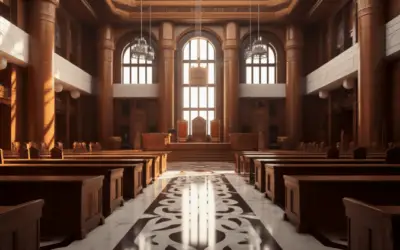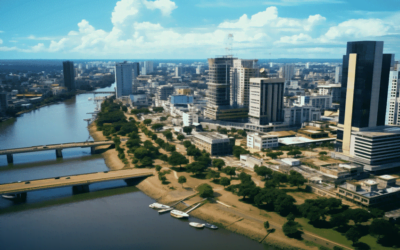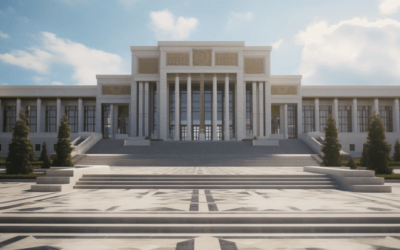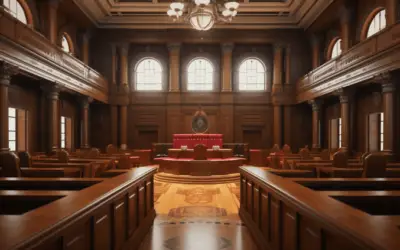Hey there, fellow drone enthusiasts! If you’ve landed here, I can relate to your search intent. Kenya’s drone laws can seem like a maze of rules, and it’s not always easy to find clear and concise information.
I get it—you want to fly your drone legally, capture those breathtaking aerial shots, and avoid any unwanted run-ins with the authorities. So, let me be your guide into the fascinating world of Kenya’s drone regulations.
You’re in luck, my friend because I’ve dug deep into Kenya’s drone laws to find the answers you’ve been looking for. This isn’t just a run-of-the-mill article; it’s the result of some serious research on my part.
I’ve combed through the official regulations, reached out to the experts at the Kenya Civil Aviation Authority, and even chatted with fellow drone enthusiasts who’ve ventured into Kenyan skies. I’ve done the legwork, so you don’t have to.
Curious to know what you’ll find in this article? Well, I’ve got the scoop on everything you need to navigate Kenya’s drone laws smoothly. From the basics for hobbyist drone pilots to the nitty-gritty details of commercial drone operations and even guidance for visitors to Kenya, this article has you covered.
So, if you’re ready to gain a comprehensive understanding of Kenya’s drone regulations, keep reading. Your search intent is about to meet its match, and you’ll be soaring through Kenya’s skies with confidence in no time.
Regulatory Authorities in Kenya

Let’s start by uncovering the guardians of the Kenyan skies, shall we? When it comes to drone regulations, it all begins with the Kenya Civil Aviation Authority, fondly known as the KCAA. I did some digging, and I’m excited to share the insights I’ve gathered about this key regulatory body.
Plus, we’ll delve into the heart of the matter, the Civil Aviation (Unmanned Aircraft Systems) Regulations, 2020. Trust me, it’s not as daunting as it sounds.
Kenya Civil Aviation Authority (KCAA)
Alright, let’s get acquainted with the star of the show, the Kenya Civil Aviation Authority, or KCAA for short. This is the institution that takes the helm when it comes to ensuring that drone operations in Kenya are safe and in line with the law.
KCAA is like your trusted guide in the world of aviation, and they’re the ones who keep an eye on drone activities too.
So, what’s their role, you ask? Well, the KCAA sets the rules, issues permits and generally makes sure that drones take to the Kenyan skies without causing trouble.
Whether you’re a Kenyan local or a drone-wielding visitor, the KCAA’s got its eyes on you. Remember, drones can be a bit of a handful when it comes to privacy and safety, so these guys are essential to keeping everything in check.
The Key Legal Document
Now, I know legal documents might not sound like the most thrilling read, but trust me, you’ll want to know about the Civil Aviation (Unmanned Aircraft Systems) Regulations, 2020.
This document is the backbone of drone regulations in Kenya. Think of it as the user manual for flying your drone legally in this beautiful country.
In this set of regulations, you’ll find the do’s and don’ts for drone operations, who needs licenses, and how high your drone can go.
The document might sound a bit daunting, but don’t worry; we’ll break it down for you. It’s your ticket to understanding the rules, ensuring safe flights, and avoiding any run-ins with the authorities. So, let’s dive in and uncover the secrets hidden within these regulations.
Also Read: Drone Laws in Kazakhstan 2024
General Rules for Flying Drones in Kenya
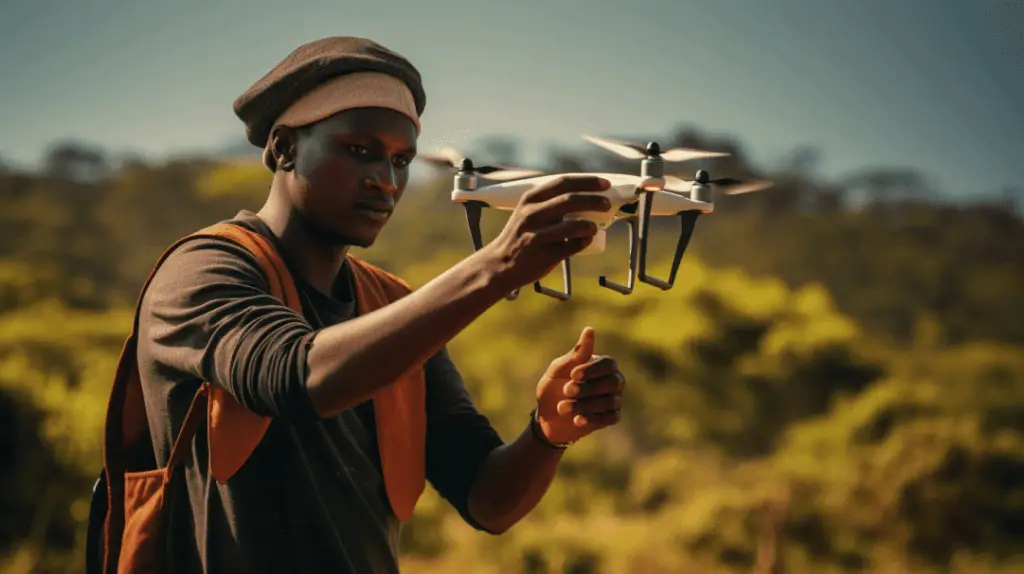
Now, let’s get down to the nitty-gritty of flying drones in Kenya. There’s a method to the madness, and it all boils down to the rules set by the Kenya Civil Aviation Authority (KCAA).
They’ve got a system in place to categorize drones based on risk factors, and each category comes with its own set of requirements and restrictions. Let’s unravel this for you step by step.
Allowed Drone Use in Kenya under KCAA Regulations
First things first, let’s talk about whether flying drones are even allowed in Kenya. Good news—it is, and it’s all thanks to the KCAA regulations.
They’ve given the green light for drone enthusiasts to take to the Kenyan skies, but there’s a catch. There are rules and guidelines in place to ensure that everything goes smoothly, and that’s what we’re here to explore.
Categorization of Drones Based on Risk Factors
The KCAA likes to keep things organized, and to do that, they’ve categorized drones based on risk factors. It’s a bit like classifying different species in the animal kingdom, but instead, we’re talking about drones.
The riskier the operation, the more rules and regulations come into play. These categories help to ensure that everyone knows what’s expected when they launch their drones.
Requirements and Restrictions for Each Drone Category
Now, let’s dive deeper into the requirements and restrictions for each of these drone categories. There are three in total, and I’m here to give you the lowdown on what you can and can’t do with your drone in Kenya.
Low Risk (up to 25 kg)
This is the “low-risk” category. If your drone weighs up to 25 kilograms, you’re in this group. What does that mean for you? Well, you can fly within a visual line of sight, at specific distances from people and buildings, and up to a maximum height of 400 feet above ground.
But there’s more to it, and I’m here to unravel the rest for you.
Medium Risk, Regulated Lower Risk
Now, if your drone operations are a bit more complex or pose a slightly higher risk than Category A, you’ll find yourself in Category B. But don’t worry; it’s not as intimidating as it sounds.
To operate in this category, you need authorization from the Aviation Authority, and there are specific limitations based on your operation’s complexity. Let’s explore what these regulations entail.
High Risk
Category C is the high-risk zone. Drones in this category are allowed in airspaces that aren’t classified as prohibited, restricted, or dangerous. However, they’re subject to air traffic control instructions and strict limitations on heights and distances from people, buildings, and objects.
To fly in this category, you’ll need special authorization from the authority, and we’ll uncover all the details you need to know.
Remote Pilot License
So, here’s the deal. If you’re planning to take your drone adventures into Categories B and C, you’ll need to buckle up and get yourself a Remote Pilot License (RPL). It’s like your golden ticket to more complex drone operations.
This license shows that you’re up to the task and that you’ve got the training and knowledge to handle the higher risk that comes with these categories. I’ll share more about what’s involved and why it’s a must-have.
Registration and Permit Certificate Requirements
In Category A, things are a bit more straightforward, but that doesn’t mean there are no rules to follow. Whether you’re a hobbyist or a pro, you’ll need to register your drone with the Authority and obtain a permit certificate.
It’s all about keeping things transparent and ensuring that you’re operating within the guidelines. We’ll explore the process and why it’s essential, even in the lower-risk category.
Altitude, Visual Contact, and Safety Distance Regulations
Now, let’s talk altitude, visual contact, and safety distances. You don’t want your drone flying too high or getting too close to people and buildings.
So, here’s the scoop: drones in Kenya shall not soar above 400 feet above the ground, and they should maintain a safe distance from anything that’s not part of the operation. We’ll delve into the nitty-gritty of these regulations and why they’re crucial for safe and responsible flying.
Restrictions on Night Flights and Flying in Non-Visual Meteorological Conditions
Picture this: a serene night sky and your drone taking flight. Well, hold that thought for a second. Night flights are regulated, and drones aren’t allowed to take off after dark without proper authorization. The same goes for flying in non-visual Meteorological Conditions.
We’ll uncover the reasons behind these restrictions and when you can get the green light for those nocturnal adventures.
Prohibitions Related to Public Roads and Airports
While you might be tempted to capture drone footage along a scenic roadway or near an airport, there are strict prohibitions in place.
Flying your drone over a public road or using it for take-off or landing is a no-go. We’ll explore the reasons for these restrictions and how to navigate your drone journeys around these areas safely.
Also Read: Drone Laws in Jordan 2024
Notes for Recreational Drone Pilots
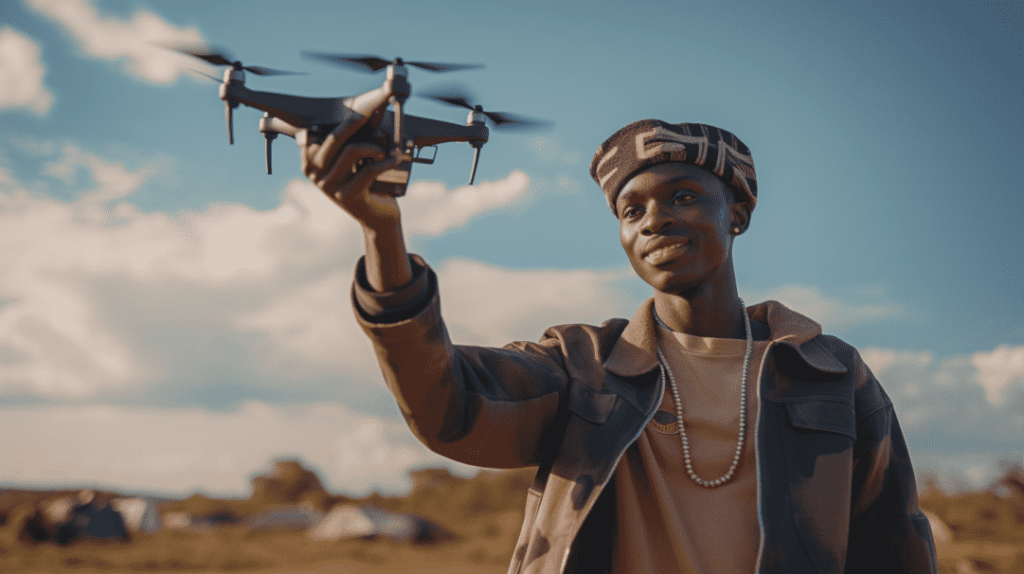
Now, let’s talk about recreational drone pilots. You might be flying for the sheer joy of it, capturing stunning aerial views of Kenya’s landscapes, or simply enjoying the thrill of piloting a drone.
But whether you’re a Kenyan local or a foreign tourist, there are some important notes you should keep in mind to make your drone experience smooth and hassle-free.
Application of General Rules to Recreational Drone Pilots
Recreational pilots, I haven’t forgotten about you. While the regulations are essential, they also apply to those of you who fly drones purely for fun.
All the general rules we’ve talked about, from altitude limits to safety distances and restrictions, are crucial for recreational drone pilots too. So, even if you’re just flying for the love of it, make sure to follow the guidelines to ensure that your drone flights are enjoyable and safe.
Special Considerations for Foreign Tourists
For foreign tourists, Kenya is a fantastic place to explore with your drone, but there are a few things you need to keep in mind. While the KCAA allows drone use by foreign visitors, you’ll need a drone pilot license to operate in Kenya.
The good news is that there’s a 30-day temporary permit available. So, you can still capture breathtaking aerial shots during your visit, but it’s important to know the rules and get the necessary paperwork done.
I’ll guide you through what you need to do to ensure your drone adventures in Kenya are memorable and hassle-free.
Temporary Permits for Travelers
Now, let’s talk about those temporary permits. These come in handy for tourists or travelers who want to explore Kenya with their drones. Whether you’re here for a short visit or an extended stay, these permits give you the freedom to fly your drone and capture stunning moments.
I’ll share the details on how to apply for these permits and what you need to keep in mind during your time in Kenya. So, don’t miss out on those picturesque drone shots during your journey.
Also Read: Drone Laws in Japan 2024
Temporary Import Permits for Drone Use

Planning to bring your drone to Kenya? Well, that’s fantastic news! But before you pack your bags and set off on your drone adventures in this beautiful country, it’s crucial to understand the procedures and requirements for temporary import permits, whether it’s for private or commercial use.
Let’s dive into the details so you can fly worry-free.
Procedures for Temporary Import of Drones for Private Use
If you’re an enthusiast looking to temporarily bring your drone to Kenya for personal use, the procedure isn’t as daunting as it may sound. You’ll need to apply for approval from the authority and provide essential documents, including identification documents and details of your drone.
It’s all about ensuring that your drone remains for personal use and doesn’t get involved in any commercial activities. I’ll walk you through the process so that you can get everything sorted out before your flight.
Duration and Reporting Requirements for Drones Temporarily Imported
So, how long can you keep your drone in Kenya with a temporary import permit? The duration will be specified in the permit itself, and it’s essential to stick to this timeframe. And remember, you should notify the authority when you decide to take your drone out of the country.
Compliance with these reporting requirements ensures that you have a smooth experience while enjoying the stunning landscapes of Kenya.
Procedures for Temporary Import of Drones for Commercial Use
Now, if you’re planning to use your drone for commercial purposes during your time in Kenya, there’s a specific procedure you’ll need to follow. This includes applying for a Remote Aircraft Operators Certificate (ROC) from the KCAA.
The application process involves demonstrating your organization’s capability, safety measures, and training programs. It’s a bit more involved than private use, but with the right steps, you can get that ROC and start your commercial drone operations.
I’ll guide you through the process, so you’re ready to capture stunning footage for your business or projects.
Also Read: Drone Laws in Jamaica 2024
Guidelines for Safe Drone Operation

Safety should always be a top priority when operating drones in Kenya. To help ensure a smooth and secure flying experience, there are several key safety considerations to keep in mind. Whether you’re a local enthusiast or a foreign visitor, understanding and following these guidelines is crucial.
Key Safety Considerations When Operating Drones in Kenya
Avoid Flying Over People or Large Crowds
It might be tempting to capture some fantastic aerial shots of gatherings or events, but it’s vital to avoid flying your drone over people or large crowds.
This rule is in place to prevent any potential accidents or disruptions. Flying at a safe distance from people not involved in your operation is a fundamental safety measure.
Respect Privacy While Flying
Respecting others’ privacy is a golden rule for drone pilots. Remember that your drone’s camera can capture more than just stunning landscapes. Make sure you don’t infringe on anyone’s personal space or invade their privacy.
Maintaining a respectful distance from individuals and their properties is not only a safety practice but also an ethical one.
Adhere to Altitude Restrictions (Not Exceeding 122 Meters or 400 Feet)
Altitude limits are in place to ensure the safety of manned aircraft, and they shouldn’t be taken lightly. In Kenya, the maximum altitude for your drone is 122 meters or 400 feet above ground level.
Staying within this limit is crucial to preventing any potential conflicts with other aircraft in the skies. So, remember to keep your drone flying at a reasonable height for a safe and enjoyable experience.
Maintain Direct Visual Contact with the Drone
It’s like keeping an eye on your precious camera in a crowd. To ensure a safe operation, maintaining direct visual contact with your drone is a must. It’s your bird’s-eye view, and losing sight of it can lead to accidents or mishaps.
So, always keep your eyes on the drone, just like you would with a valuable possession.
Keep a Safe Distance from Airports and Heliports
Kenya’s airspace is bustling with various types of aircraft. For everyone’s safety, it’s vital to keep a safe distance from airports and heliports.
This distance, typically 8 kilometers (5 miles) away from airports and 3 kilometers (1.86 miles) from heliports, ensures that you don’t interfere with manned aircraft operations. Staying clear of these zones is a standard practice to prevent any potential incidents.
Daylight Operation and Weather Conditions
Flying a drone in the dark isn’t just challenging; it’s also risky. To ensure your safety and the safety of others, only operate your drone during daylight hours and in good weather conditions.
It’s essential for maintaining clear visibility and avoiding weather-related mishaps that could damage your drone or cause accidents.
Prohibitions Regarding Sensitive Areas Like Government and Military Facilities
Some areas are off-limits for drone operations, especially those involving government or military facilities. Flying your drone near these areas is strictly prohibited, and for good reason.
It’s all about maintaining security and avoiding any misunderstandings or potentially dangerous situations. So, make sure to respect these restrictions for everyone’s safety.
Also Read: Drone Laws in Italy 2024
Traveling with Drones
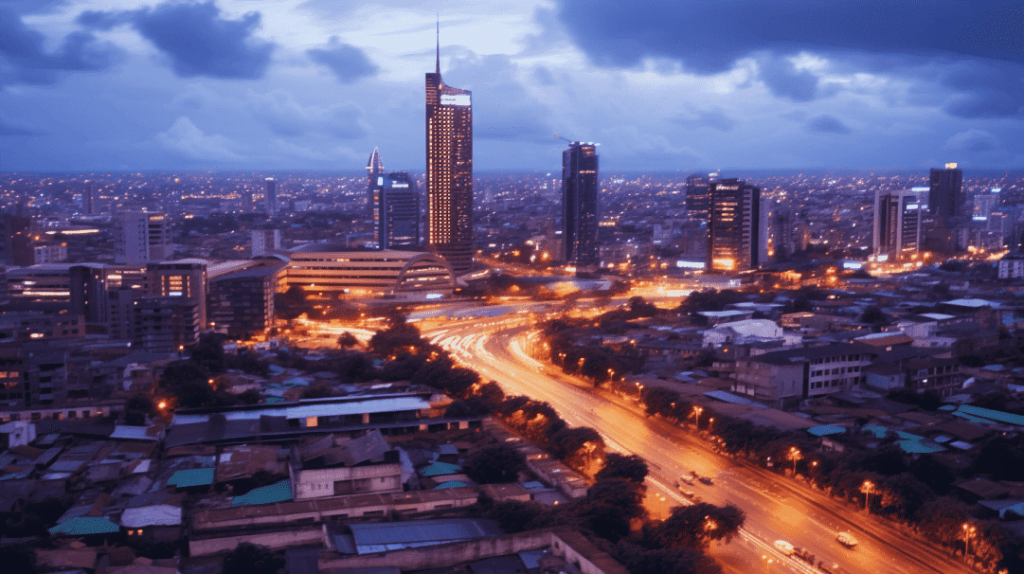
Traveling with your drone is an exciting prospect. It opens up opportunities for capturing breathtaking aerial shots in new and exotic locations. However, there are essential guidelines and tips to follow to ensure a smooth and trouble-free journey with your flying companion.
Guidelines for Bringing Drones on Airplanes
Before embarking on your journey, it’s crucial to familiarize yourself with the guidelines for bringing drones on airplanes. Different airlines may have specific rules and regulations regarding carrying drones, so it’s wise to check with your airline and adhere to their instructions.
Additionally, make sure you’re aware of the international aviation regulations that may apply to your drone during air travel.
Importance of Carrying Drones as Carry-On Luggage
When it comes to transporting your drone, always opt for carrying it as carry-on luggage whenever possible. According to the Montreal Convention, airlines are only liable for losses up to a certain limit for checked baggage.
By keeping your drone as a carry-on, you reduce the risk of loss, theft, or damage during your journey, ensuring it arrives at your destination safely.
Theft and Lost Luggage During International Travel
International travel can be complex, with multiple connections and various handling processes for checked baggage. This complexity can increase the risk of theft or lost luggage, which is a nightmare scenario for drone owners.
To mitigate this risk, consider the value of your drone. If it’s worth more than USD 1,000, it’s advisable to explore alternative shipping options with reliable carriers like DHL, FedEx, or UPS. Fully insuring your shipment is another layer of protection.
Recommendations for Shipping Valuable Drones
Shipping valuable drones can be a safer option, particularly for high-end models. These carriers have stringent security measures in place to safeguard your shipment. It’s a reliable choice when you want to ensure your drone’s safe arrival at your destination.
Transporting Drone Batteries Safely and in Compliance with Airline Regulations
When traveling with drone batteries, it’s essential to follow airline regulations diligently. Lithium-ion batteries are considered “dangerous goods” by airlines, and their transportation rules are strict.
Always pack your drone batteries in a medium-sized LiPo Battery Bag, that meets safety requirements. This practice is crucial to preventing your batteries from being seized, avoiding fines, or being denied boarding. Complying with these regulations ensures a trouble-free journey with your drone.
Also Read: Drone Laws in Israel 2024
Final Thoughts on Kenya Drone Laws

As our journey through Kenya’s drone laws comes to an end, it’s essential to recap the key points we’ve discovered and emphasize the critical aspects of responsible drone usage and safety.
To stay informed and up-to-date on the latest regulations, always refer to the Kenya Civil Aviation Authority (KCAA) for the most reliable information.
Throughout this exploration of Kenya’s drone laws, we’ve learned about the regulations that govern drone usage in this beautiful East African nation.
Whether you’re a Kenyan resident, a tourist, or a commercial operator, there are specific rules and requirements to follow.
From the categorization of drones based on risk factors to the limitations on altitude, visual contact, and proximity to sensitive areas, understanding these laws is vital for a seamless and enjoyable drone experience in Kenya.
As drone enthusiasts, it’s our responsibility to ensure that our flights are not only enjoyable but also safe and respectful of others. Adhering to Kenya’s drone regulations is not just a legal requirement; it’s a commitment to safety.
Whether you’re flying for recreational purposes or commercially, prioritize the well-being of those around you, respect their privacy, and maintain the highest standards of safety.
By doing so, you contribute to the positive image of drone enthusiasts and pave the way for a harmonious coexistence of drones and the public.
Drone regulations are subject to change and evolution, reflecting advancements in technology and the industry. For the most current and detailed information on Kenya’s drone laws, always refer to the Kenya Civil Aviation Authority (KCAA).
They are the authority responsible for regulating drones in Kenya and can provide the latest updates and guidance to ensure your drone operations remain compliant with the law.
Staying informed and aware of any changes in the regulations will enable you to continue enjoying the beauty of Kenya from the skies while upholding the highest standards of safety and responsibility.
Frequently Asked Questions on Kenya Drone Laws
1. Can tourists fly drones in Kenya?
Tourists can fly drones in Kenya, but there are specific regulations they must adhere to. Foreign visitors are allowed to operate drones in Kenya when permitted. However, they must obtain a foreign visitor drone pilot license and register their drones with the Kenyan authorities.
Tourists need to familiarize themselves with Kenya’s drone laws and seek proper authorization to ensure a smooth and legal drone experience during their visit.
2. What are the restrictions on drone flights near airports in Kenya?
In Kenya, operating drones in proximity to airports is regulated to ensure aviation safety. The specific restrictions vary based on the classification of the airport. For code C, D, E, and F airports, drones are prohibited within 6.2 miles (10 kilometers) from the airport reference point without authorization.
For code A and B airports, the restriction is within 4.3 miles (7 kilometers). To fly near airports, drone operators must obtain proper authorization, and this is crucial to prevent any interference with manned aircraft operations.
3. Do I need a drone pilot license in Kenya for recreational use?
In Kenya, a drone pilot license is required for commercial drone operations. For recreational drone use in Category A (low-risk operations), a pilot license is not mandatory.
However, all drone operators, including recreational users, must adhere to specific operational categories based on risk factors and comply with general drone regulations. Even for recreational use, it’s essential to follow safety guidelines and ensure responsible drone operation.
4. How can I import my drone for temporary use in Kenya?
If you want to temporarily import a drone into Kenya for private use, you can apply for approval from the authorities. The application should include identification documents, details of the drone, a valid visa for the duration of your stay (if applicable), and information about the areas of drone operation.
Once granted, the approval specifies the duration of the drone’s stay in the country, and you must inform the authorities when exporting the drone out of Kenya.
5. Can I fly my drone at night in Kenya?
Flying drones at night in Kenya is restricted unless you obtain authorization from the Kenya Civil Aviation Authority (KCAA). Night operations pose additional risks and require specific safety measures to ensure safe flight. To conduct nighttime drone flights, you must receive explicit approval from the KCAA. It’s important to follow these regulations to prevent accidents and ensure safe and responsible drone use in Kenya.






